
![]()
Search the Journey to Forever website – click HERE
|
Journey to Forever: Make a donation |
Navigation
Contact usTo Keith Addison Handmade Projects |
Solar cooker resources
"I'd put my money on the sun and solar energy. What a source of power! I hope we don't have to wait 'til oil and coal run out before we tackle that." -- Thomas Edison
Solar Cookers International's Solar Cooking Archive
http://solarcooking.org/
The most comprehensive resource on solar box cookers: general information, news, plans,  solar cooking documents in English, German, Spanish, French, Italian and Portuguese and Arabic, country reports, technical reports, newsletters, the Solar Cooker Review, multimedia, photo gallery, slideshow, international directory, NGOs, manufacturers, supplies, books, mailing list discussion (with searchable archives), comprehensive list of links to other resources.
solar cooking documents in English, German, Spanish, French, Italian and Portuguese and Arabic, country reports, technical reports, newsletters, the Solar Cooker Review, multimedia, photo gallery, slideshow, international directory, NGOs, manufacturers, supplies, books, mailing list discussion (with searchable archives), comprehensive list of links to other resources.
FAQ -- solar cooking in a nutshell:
http://solarcooking.org/solarcooking-faq.htm
Solar cooking documents :
http://solarcooking.org/docs.htm
Search the Solar Cooking Archive:
http://solarcooking.org/search.htm
Join the solarcooking-L Mailing List:
http://solarcooking.org/solar-l.htm
Searchable mailing-list archives:
http://groups.yahoo.com/group/solarcooking-l/
Solar Cooker Review, published two or three times a year:
http://solarcooking.org/docs.htm#newsletters
Links:
http://solarcooking.org/links.htm
"Balancing the Scales" -- speech by Bill Sperber at the Solar Box Cookers International Annual Meeting in l990 explains how solar box cookers can reduce inequities of health, environment, economics and political freedoms in the third world.
http://solarcooking.org/balance.htm
"The big adventure of a little solar cooker"
http://solarcooking.org/bernardart1.htm
--  Roger Bernard tells how designing a cooker simple enough for 10-year-old schoolchildren to build in less than an hour led to the development of a simple solar cooker for poor rural people. The "Cookit" Foldable Family Panel cooker is neither a "solar oven" nor "curved concentrator" but a simple yet powerful hybrid. Full plans and instructions at:
Roger Bernard tells how designing a cooker simple enough for 10-year-old schoolchildren to build in less than an hour led to the development of a simple solar cooker for poor rural people. The "Cookit" Foldable Family Panel cooker is neither a "solar oven" nor "curved concentrator" but a simple yet powerful hybrid. Full plans and instructions at:
http://solarcooking.wikia.com/wiki/Cookit
How the "Cookit" is helping refugees in Kenya:
http://solarcooking.org/95sep15a.htm
"Understanding Solar Cookers and Ovens" by Thomas Bowman, Understanding Technology Series, Technical Paper # 36, Volunteers in Technical Assistance (VITA), 1985 -- Useful overview of the pros and cons of the different types of solar cookers available, from Professor Bowman, Head of the Mechanical Engineering Department at the Florida Institute of Technology, and a VITA volunteer. He points out that, though solar cookers were often resisted by traditional communites in the past, simply because they weren't used to them, these days they often don't have much choice in the matter because the supplies of traditional fuel have run out.

Solar cooker in Nepal: cost $3
http://www.cd3wd.com/cd3wd_40/vita/solrcook/en/solrcook.htm
"Solar Cooker Construction Manual" -- 5,000-word illustrated booklet, prepared by VITA Volunteers, 1967
http://www.cd3wd.com/cd3wd_40/vita/solrckr/en/solrckr.htm
"Understanding Solar Concentrators" -- VITA Technical Paper # 30, 1985, 7,000-word illustrated booklet.
http://www.cd3wd.com/cd3wd_40/vita/solrconc/en/solrconc.htm
In "Reduction of tropical deforestation by massive use of solar cookers" Ari Lampinen of Technology for Life, Finland, explains why the world needs 200 million solar box cookers.
http://www.ismea.org/INESDEV/ala.html
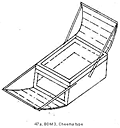
Review of solar cooker designs by Ashok Kundapur: 56 major designs, 59 variations and 66 drawings of solar cookers. Test data by other researchers, a new set of parameters for testing solar cookers, reflectors, and insulating material.
http://members.tripod.com/~ashokk_3/solar1.htm
Solar cookers as a means for reducing deforestation in Nepal by Anita Manandhar of the Centre for Rural Technology in Nepal, where fuelwood demand has increased to twice the forest growth.
Nepal's Centre for Rural Technology (CRT) is an autonomous private sector, professional development organization established in August 1989, engaged in developing and promoting effective technologies to meet the basic needs of rural people.
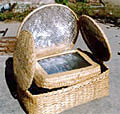
It's made of baskets!
http://crtnepal.org/new/
"Breakthrough in Kenyan Refugee Camps" reports on Solar Cookers International's work in  Kenya. "More than 5,000 families have attended workshops and returned home with their own solar cooker. It costs only US$10 to supply each of these families with a solar cooker, a black pot, a supply of trial food, and instruction on how to use their new cooker. Follow-up visits have revealed a high level of use."
Kenya. "More than 5,000 families have attended workshops and returned home with their own solar cooker. It costs only US$10 to supply each of these families with a solar cooker, a black pot, a supply of trial food, and instruction on how to use their new cooker. Follow-up visits have revealed a high level of use."
http://solarcooking.org/kakuma-m.htm
"Solar Cookers and Social Classes in Southern Africa" by William Noble Grundy -- interesting examination of the failure of a solar box cooker project in Lesotho, Southern Africa: "Several projects have already targeted the people who need solar box cookers the most, the rural women. Those projects have failed for complex reasons involving the resistance of traditional cultures to invasion by foreign innovation."
http://noble.gs.washington.edu/~noble/safrica1.htm
"Cooking with the sun: Chilean village's experiment with solar ovens offers alternative to widespread deforestation", San Francisco Chronicle, July 26, 2001 -- Lucila Rojas remembers the days when she and her neighbors risked their lives to cook a hot meal over a wood-burning stove. "We had to steal firewood, because there was no longer any left in the places where you could freely look," she said. "Sometimes we were chased (by landowners), even by gunshots. I was fed up. I didn't want any more war." Now she has a solar oven in her home.
http://www.sfgate.com/cgi-bin/article.cgi?file=/chronicle/
archive/2001/07/26/MN33373.DTL
Water pasteurization
"A summary of water pasteurization techniques" by Dale Andreatta. "UNICEF estimates that 60% of rural families and 23% of urban families in developing countries are without safe water. Contrary to what many people believe, it is not necessary to boil water to make it safe to drink... Heating water to 65 deg C (149 deg F) for 6 minutes, or to a higher temperature for a shorter time, will kill all germs, viruses, and parasites" -- this is well within the range of solar box cookers.
http://solarcooking.org/pasteurization/solarwat.htm
"Recent Advances in Solar Water Pasteurization" by Dr. Robert Metcalf. "During the cholera outbreak in Peru, the Ministry of Health urged all residents to boil drinking water for 10 minutes. The cost of doing this would amount to 29% of the average poor household income," writes Dr Metcalf. "As a microbiologist, I have always been perplexed as to why boiling is recommended, when this is heat far in excess of that which is necessary to kill infectious microbes in water."
http://solarcooking.org/pasteurization/metcalf.htm
Solar Water Pasteurization -- Techniques, resources, discussion at The Solar Cooking Archive
http://www.solarcooking.org/pasteurization/default.htm
How to make solar box cookers
Plans and pictures of many different types of solar cookers:
http://www.solarcooking.org/plans/
 Construction plans for Roger Bernard's improved "Cookit" Foldable Family Panel -- as used at the Kakuma refugee project in Kenya.
Construction plans for Roger Bernard's improved "Cookit" Foldable Family Panel -- as used at the Kakuma refugee project in Kenya.
http://solarcooking.wikia.com/wiki/Cookit
The "Minimum" Solar Box Cooker: a powerful solar oven you can build from two cardboard boxes in a few hours.
http://solarcooking.wikia.com/wiki/
Minimum_Solar_Box_Cooker
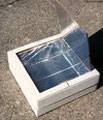
The "Easy Lid" Cooker: designs for box cookers have grown simpler, but fitting a lid can still be difficult and time consuming. In this version, a lid is formed automatically from the outer box.
http://solarcooking.org/plans/easylid.htm
"Principles of Solar Cooker Design" by Mark Aalfs of Solar Cookers International (in two parts) -- summarizes the basic principles used in the design of solar box cookers. Heat Principles, Materials Requirements, Design and Proportion, Solar Box Cooker Operation, Cultural Factors.
http://solarcooking.org/sbcdes.htm
http://solarcooking.org/sbcdes2.htm#materials
Designing and building home made focusing solar cookers by Hannu Virtanen -- a complete guide to making parabolic cookers using locally available materials.
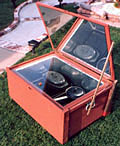 "You can cook almost anything with the sun and a 'low tech' box cooker that you can build yourself," says low-tech guru Doug Edwards. "On this day the oven reached 250 F within 35 minutes. Here in California, where I live, I have cooked a beef roast on the shortest day of the year where the outside air temp was 40F." Solar cookers, plans, recipes and more.
"You can cook almost anything with the sun and a 'low tech' box cooker that you can build yourself," says low-tech guru Doug Edwards. "On this day the oven reached 250 F within 35 minutes. Here in California, where I live, I have cooked a beef roast on the shortest day of the year where the outside air temp was 40F." Solar cookers, plans, recipes and more.
http://www.cookwiththesun.com/
Links to solar cooking resources and other good low-tech stuff. http://www.cookwiththesun.com/links.htm
Parabola Design Wood Model -- a simple wood model is used as a tool to assure the exact parabolic shape of the mirror. Precision is very important to get a small focal sun-spot and a high cooking temperature. Details a very simple drawing tool to design a parabola, makes any parabolic curve with ease. You need two pieces of straight wood, a stiff string and a pin to make this tool and to be able to draw any parabola for a desired focal distance and size.
http://home.nexgo.de/ernst.willand/amsi-model.html
The AMSI Solar Cooker Project
http://home.nexgo.de/ernst.willand/amsi-contents.html
A Tracking Solar Concentrator for the home experimenter -- Teton Engineering Inc in the US developed a 20,000 Btu (6000 watt) solar concentrator designed specifically for the backyard mechanic to build using simple construction and basic materials. Full-text online manual -- note the disclaimers and safety warnings: "Working with solar concentrators is VERY DANGEROUS."
http://www.ida.net/users/tetonsl/solar/solarhom.htm
Other resources
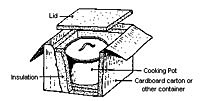 Haybox cooking: What is a haybox? Simply an insulated box used for slow cooking. Put the food in a pot and heat it up, put the pot in the haybox and it stays hot for a long time, cooking slowly. Haybox cooking saves energy. Hayboxes and solar box cookers go very well together.
Haybox cooking: What is a haybox? Simply an insulated box used for slow cooking. Put the food in a pot and heat it up, put the pot in the haybox and it stays hot for a long time, cooking slowly. Haybox cooking saves energy. Hayboxes and solar box cookers go very well together.
Haybox Cookery -- Sunseed Tanzania Trust
http://www.sunseedtanzania.org/HRC/HRCS_UK.html
How to Use a Haybasket
http://www.sunseedtanzania.org/HRC/How_to_Use.html
Some recipes suitable for a haybox
http://www.sunseedtanzania.org/HRC/Recipes.html
Rediscover the hay-box cooker -- Mother Earth News January/February 1980. A non-electric version of the modern Crock-Pot. Instructions for building the box and preparing food items including cooked cereals, pot roasts, vegetable beef stew, boiled dinners and baked beans.
http://www.motherearthnews.com/Do-It-Yourself/
1980-01-01/Rediscover-the-Hay-Box-Cooker.aspx
Haybox how to and description -- Lost Valley Center
http://www.lostvalley.org/haybox1.html
ClearDome SolaReflex diffused foil, and AA flat, bendable mirror surface sunlight reflector panels (previously known as SolarFlex) -- achieves the highest known level of radiant solar reflection: 97.4%! From ClearDome Solar:
http://home.att.net/~cleardomesolar/solarflex.html
Books on Solar Cooking
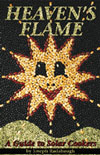 "Heaven's Flame, A Guide to Solar Cookers" by Joseph Radabaugh, 144 pages, Home Power, 1991.
"Heaven's Flame, A Guide to Solar Cookers" by Joseph Radabaugh, 144 pages, Home Power, 1991.
 Complete instructions on how to build the high-performance cardboard SunStar solar cooker, discussion of other solar cooker designs, question and answer section, how solar cookers are being accepted and used around the world, detailed cooking instructions. Buy at Amazon.com:
Complete instructions on how to build the high-performance cardboard SunStar solar cooker, discussion of other solar cooker designs, question and answer section, how solar cookers are being accepted and used around the world, detailed cooking instructions. Buy at Amazon.com:
Heaven's Flame, A Guide to Solar Cookers
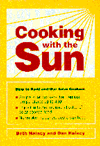 "Cooking with the Sun: How to Build and Use Solar Cookers" by Beth & Dan Halacy, 115 pages, Morning Sun Press, 1992.
"Cooking with the Sun: How to Build and Use Solar Cookers" by Beth & Dan Halacy, 115 pages, Morning Sun Press, 1992.
Detailed plans for building a plywood multi-reflector box cooker, a cardboard single-reflector box cooker, a cardboard parabolic cooker, and a solar reflector "hot plate" cooker, with line drawings and photos, history of solar cookers, solar cooking tips and necessary cookware, 62 pages of solar recipes. Buy at Amazon.com:
Cooking with the Sun: How to Build and Use Solar Cookers
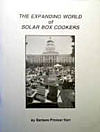 "The Expanding World of Solar Box Cookers" by Barbara Kerr, 1991.
"The Expanding World of Solar Box Cookers" by Barbara Kerr, 1991.
The history and theory behind solar cooking, by one of the developers of the simple but effective cardboard solar box cooker. "Unaware that it 'should' be made of metal or wood, I used cardboard boxes and thus opened a new line of solar box cooker development" (March 1976). With plans and instructions for building and using a solar box cooker. Online version at Solar Cooking International:
http://solarcooking.org/kerr.htm
For a printed copy, with photos and diagrams, send $15 to Kerr-Cole Solar Box Cookers, PO Box 576, Taylor, AZ 85939, USA, email bkerr@cybertrails.com
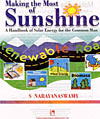 "Making the Most of Sunshine –- a Handbook of Solar Energy for the Common Man", by S. Narayanaswamy, Vikas, New Delhi.
"Making the Most of Sunshine –- a Handbook of Solar Energy for the Common Man", by S. Narayanaswamy, Vikas, New Delhi.
The author's passion for solar energy grew out of his career as a top administrator in Kerala state in India. It includes hundreds of interesting tidbits on every form of renewable energy, but two-thirds of the book deals with solar cooking. More than a dozen different solar cooker designs, along with practical sections on the best day-to-day uses of any solar cooker. The final chapter, "Promotion of Solar Cookers," is essential reading for anyone introducing solar hardware, especially in developing countries. Buy the book online:
http://www.gobookshopping.com/book_detail.php
?p=sndid&q=sch&cat_id=508&pid=25484
Solar Recipes -- Based on an original solar coobook produced by the Sacramento Municipal Utility District 10 years ago. Introduction, Cooking Guidelines, Beverages, Bread, Casseroles, Desserts, Eggs & Cheese, Meat Dishes, Pasta, Poultry, Snacks, Vegetables. Full-text online:
http://solarcooking.org/recipes/
Schools solar
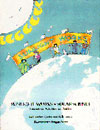 "Sunlight Works -- Solar Science Educational Activities for Children" by Heather Gurley and Bob Larson.
"Sunlight Works -- Solar Science Educational Activities for Children" by Heather Gurley and Bob Larson.
Large-format, well-illustrated, 32-page book aimed at using solar cooking as a learning activity for children ages 8 to 12. Variety of activities illustrating solar concepts, including plans for building a solar box cooker. From: SunLightWorks, Inc., 2255 H Shelby Drive, Sedona, Arizona 86339, USA, email: blarson@sedona.net
Solar box cookers
Solar box cookers for schools